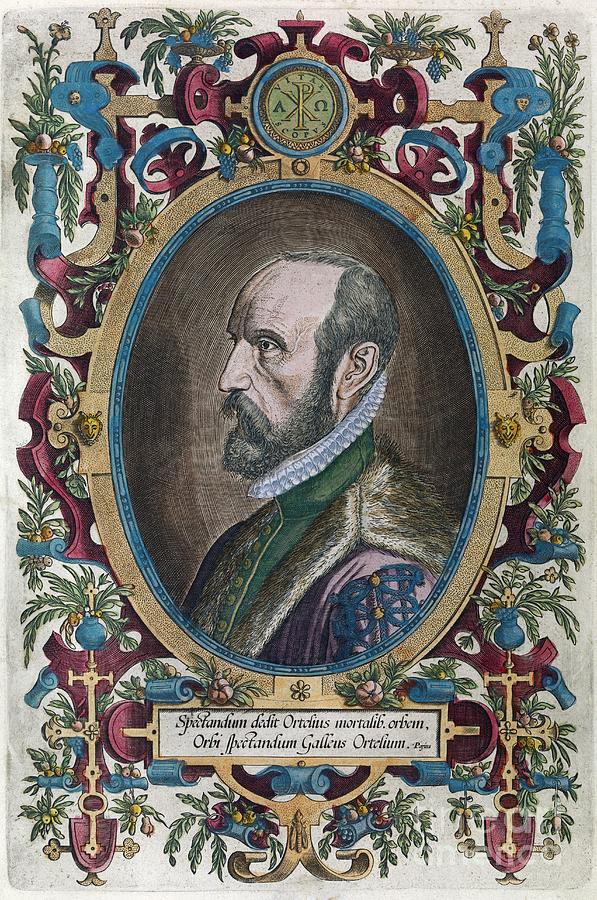

Africae Tabula Nova includes correctly located toponyms that are still in current use, such as Benin, the Congo, and Mozambique. Norwich observes that "Zanzibar" was, at the time, often used as a name for the East African coast north of Cape Delgado. Scholars have hypothesized that this apparent error may have been because of a lack of space further east on the map. Ortelius himself noted that it was "unknown to the ancients" and relied upon Arab and Persian authors for information. Ortelius's map is also notable for placing Zanzibar in southwestern Africa, on the Atlantic coast of southern Africa. The underground passage of the Niger was included on every major subsequent map of Africa, with the exception of Mercator's map, until the late 17th century. Africae Tabula Nova depicts the Nile emanating from two unnamed side-by-side lakes, in line with Ptolemaic understanding a western lake as the headwaters of the Zaire River and the Niger River passing underground for about 60 miles (97 km), in accordance with a Latin legend. Paolo Forlani's 1562 map of Africa and Gerardus Mercator's 1569 map of the continent were also likely influences on Ortelius.

Description Īfricae Tabula Nova is largely based on a wall map published by Giacomo Gastaldi in Venice in 1564. Starting in 1579, the Theatrum Orbis Terrarum was printed by Christopher Plantin. The atlas was first printed by Gielis Coppens van Diest from 1570 to 1573, with Ortelius paying. It necessitated four separate printings in 1570 alone, and in total 31 different editions of the atlas were published between 15. The atlas was printed widely in seven languages: Dutch, English, French, German, Italian, Latin, and Spanish.
#ABRAHAM ORTELIUS SERIES#
Taking ten years to complete, Theatrum Orbis Terrarum was the first atlas to intentionally include a uniform series of maps. The map was published in Ortelius's 1570 atlas Theatrum Orbis Terrarum ("Theater of the World"), commonly regarded as the first modern atlas and also notable for its substantial coverage of Africa, including multiple African regional maps in addition to the Africae Tabula Nova. It was engraved by Frans Hogenberg, who went on to author the Civitates Orbis Terrarum in 1572. The map's title translates to "New Map of Africa" in English. Publication Title page from a 1606 edition of Theatrum Orbis TerrarumĪfricae Tabula Nova was published in Antwerp by Abraham Ortelius in 1570. Africae Tabula Nova was the first map of Africa to include accurate information from these expeditions. European expeditions to Abyssinia, the Congo River, West Africa, and the Zambezi had also yielded information about some portions of Africa's interior.

īy the time Africae Tabula Nova was published in 1570, the coasts of the continent had already been well surveyed. Following the death of his father, he began trading in maps, which led him to Frankfurt and other larger cities and exposed him to the highest-quality foreign maps, which inspired him to publish an atlas of his own. After studying mathematics and the classics, he began his career as a map colorist at age 20. The creator of Africae Tabula Nova, Abraham Ortelius, was born in Antwerp in 1527. The map was also the first to include accurate information from European expeditions into portions of Africa's interior.Ĭartographic historian Wulf Bodenstein called Africae Tabula Nova "a cornerstone map that represents a significant improvement over what we have seen so far", while cartographic archivist Ben Huseman notes that the map set "a high standard for European maps of Africa" and influenced later maps of the continent well into the 17th century.īackground Painting of Abraham Ortelius by Peter Paul Rubens, 1633 Compared to earlier maps, Ortelius sharpened the shape of Southern Africa in Africae Tabula Nova, shortened the extent of North Africa from west to east, and reduced the eastward extension of Africa, in all cases better depicting reality. The atlas was printed widely in seven languages and 31 total editions between 15.Īfricae Tabula Nova is largely based on a wall map published by Giacomo Gastaldi in 1564, while Paolo Forlani's 1562 map of Africa and Gerardus Mercator's 1569 map of the continent were also likely influences on Ortelius. It was engraved by Frans Hogenberg and included in Ortelius's 1570 atlas Theatrum Orbis Terrarum ("Theater of the World"), commonly regarded as the first modern atlas. Map of Africa published in 1570 Africae Tabula Nova, 1570Īfricae Tabula Nova ("New Map of Africa") is a map of Africa published by Abraham Ortelius in 1570.


 0 kommentar(er)
0 kommentar(er)
